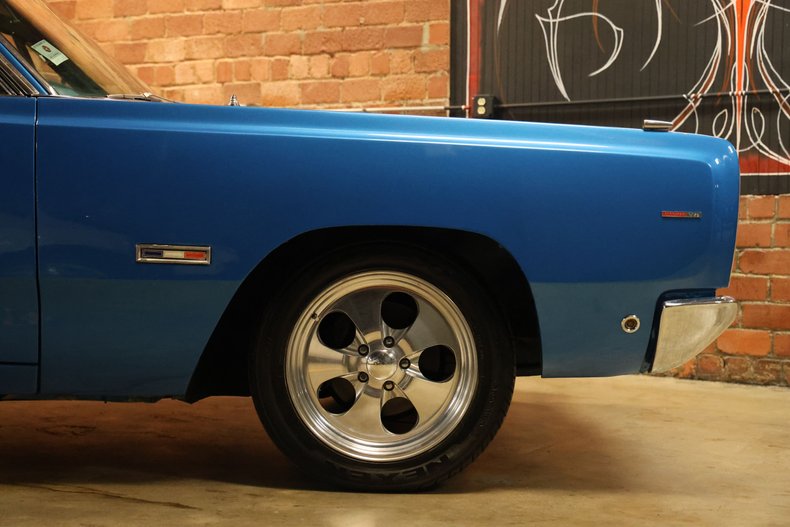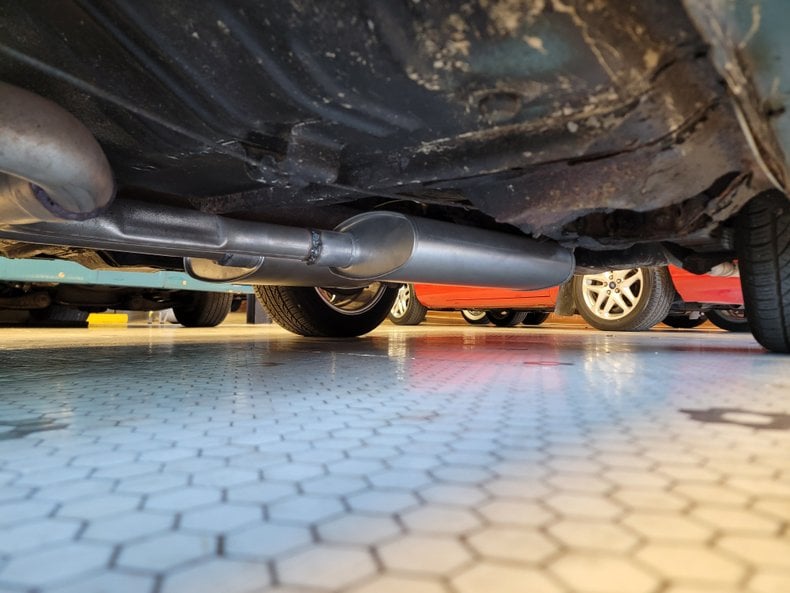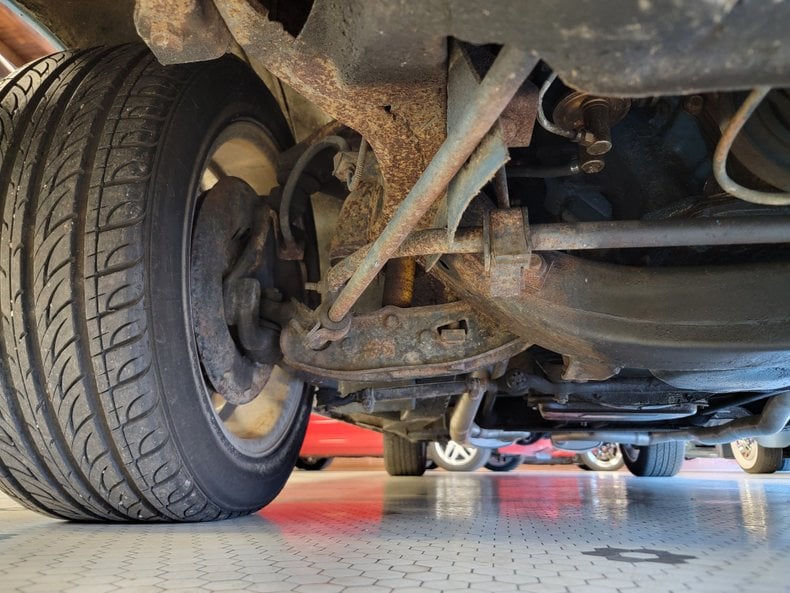Featured on AutoHunter, the online auction platform driven by ClassicCars.com, is this 1968 Plymouth Sport Fury convertible. It is one of 388 U.S.-spec convertibles built with the Commando 383, and it’s backed by a three-speed automatic transmission. Features include power steering and brakes, power windows, and Sony AM/FM/CD stereo. Finished in blue with black convertible top over a blue cloth and vinyl interior, this Plymouth comes with a matching convertible top boot and clear title.

The reportedly rust-free body has been refinished in medium blue. The black convertible top is power-operated and features a plastic rear window. Other features include fender-mounted turn signal indicators, fender-mounted power antenna, and dual side-view mirrors with manual driver-side remote.

A set of modern, five-spoke polished aluminum wheels is wrapped in radial tires.

The cabin is furnished in blue cloth and vinyl, with the cloth being a modern update. Up front, you’ll find two buckets with a center “buddy seat” and arm rest. Features include power windows, column-mounted automatic shifter, and custom center console-mounted Sony AM/FM/CD stereo.

Instrumentation consists of a 120-mph speedometer and gauges for the coolant temperature, fuel level, and alternator. According to the selling dealer, the odometer reads 96,693 miles, though the true mileage on this vehicle is unknown.

Power is provided by a rebuilt, non-original Commando 383 four-barrel backed by Chrysler’s venerable TorqueFlite automatic. The selling dealer states that the engine has logged 1,000 miles since being rebuilt. Engine bay features include chrome valve covers and air cleaner housing.


This Plymouth is equipped with an independent front suspension and a solid rear-drive axle. Braking is power-assisted. A dual exhaust system exits at the rear.

The auction for this 1968 Plymouth Sport Fury convertible ends Wednesday, April 24, 2024 at 11:30 a.m. (PDT).
Visit the AutoHunter listing for more information and photo gallery






This one brings me a lot of great memories. In 1968, my uncle Bob bought a new dark blue metallic like this one is. It had light blue vinyl interior. It was a 2 door hardtop with that sport back roof covered in a black vinyl top Sport Fury. He ordered it with the famous Chrysler Corporation 383, with a 4 barrel carburetor, although I don’t remember what kind of carburetor it was. In 1968 I was 8 years old, and on my way to becoming a full-on American car Gearhead, but some things I didn’t know. His had 3 pinstripes going down each side, and that looked great compared to no pinstripes at all. I really liked the dashboard. It had very large gauges, and to comply with the federal safety features, all the switches on the dash were toggle, also as part of the safety mandate. All Chrysler Corporation vehicles had small round side marker lights also required in 1968. I thought Chrysler did a great job with those, in 69, Chrysler moved to rectangleur shaped reflectors with no illumination. The instrument panel featured aqua colored floodlights that lit the entire panel from above, which was another great idea from Chrysler. My dad had a 69 300, with the same lighting a long with all Chrysler Corporation full-size vehicles. Those amber turn indicators at the end of the front fenders, my dad’s 300 had the same feature. Both my uncle and my dad used the Sport Fury and the 300 were tow cars for 17 foot travel trailers. The 383 in the Sport Fury, and the 440 in the 300, both handled those trailers with no problems. I like the Plymouth’s styling. In fact I liked the 69 through 71 Plymouths. The 71 Sport Fury had hidden headlights. I think the 71 model year was great looking, from front to rear. After I got my license in 71, I drove the Sport Fury and the 300 quite a bit. I found the Sport Fury to have such strong power steering that it was hard to drive, and had no road feel at all. The 300 wasn’t like that, it had plenty of road feel, kinda like Ford’s power steering. Both those cars were very powerful. Thanks again for the memories.